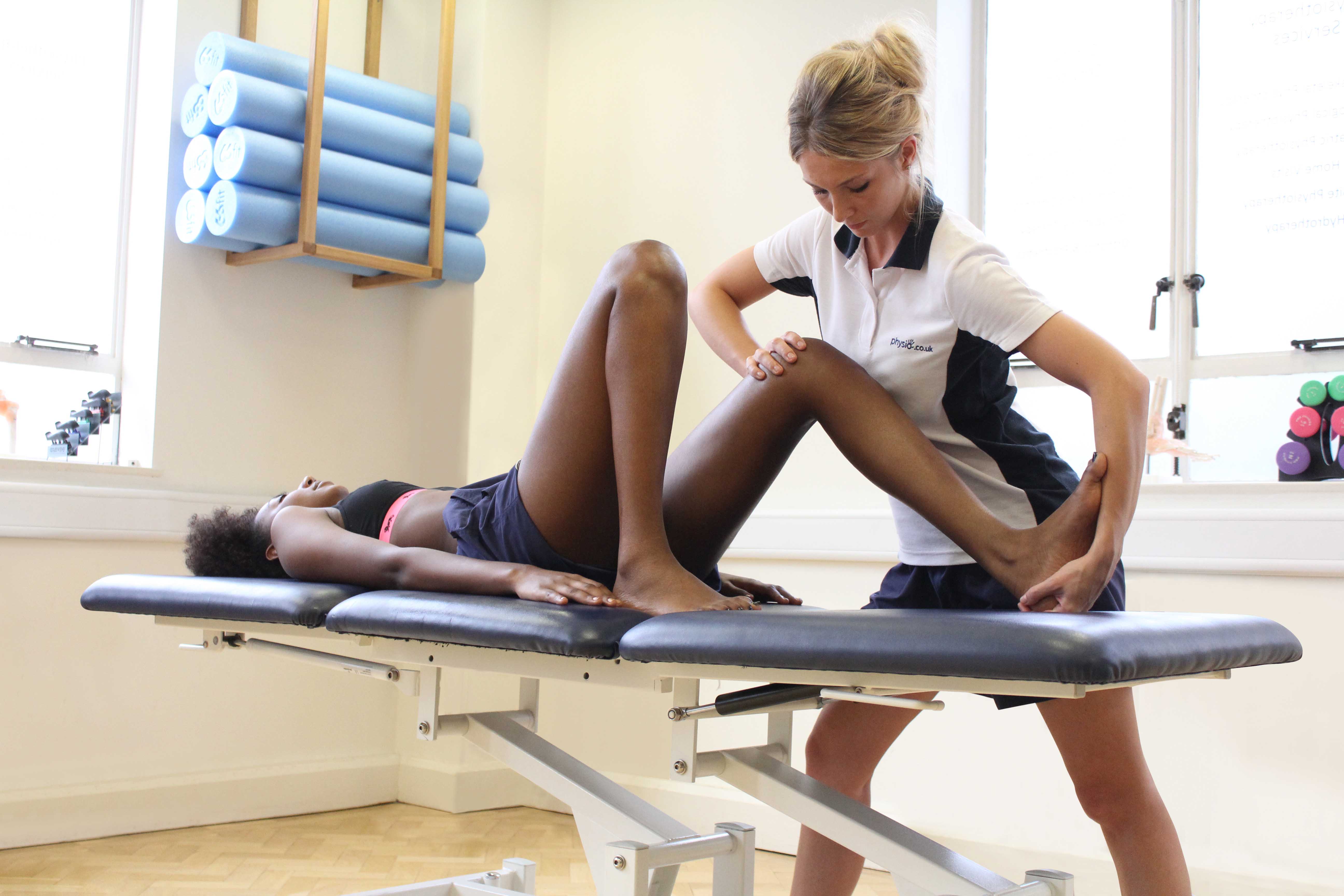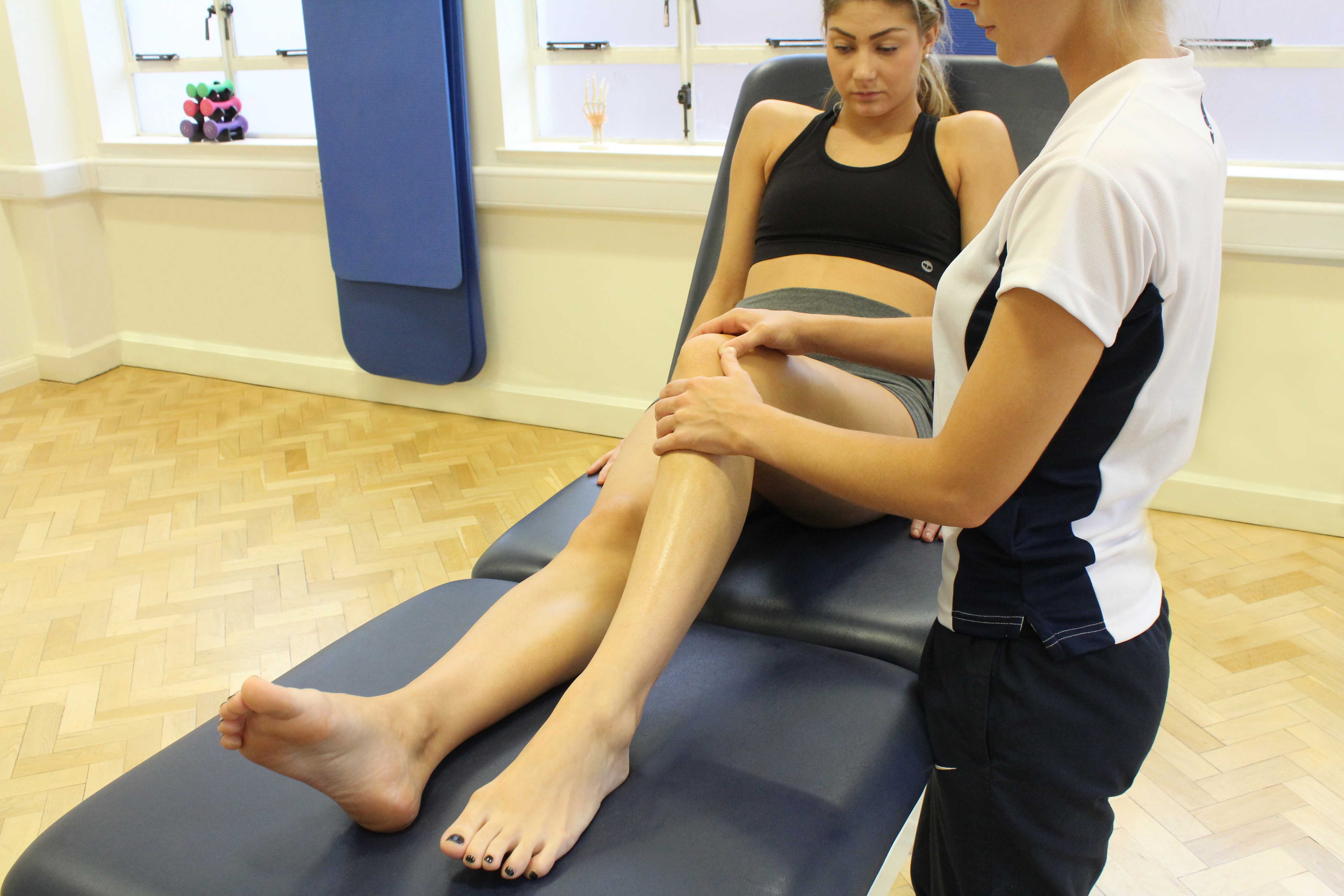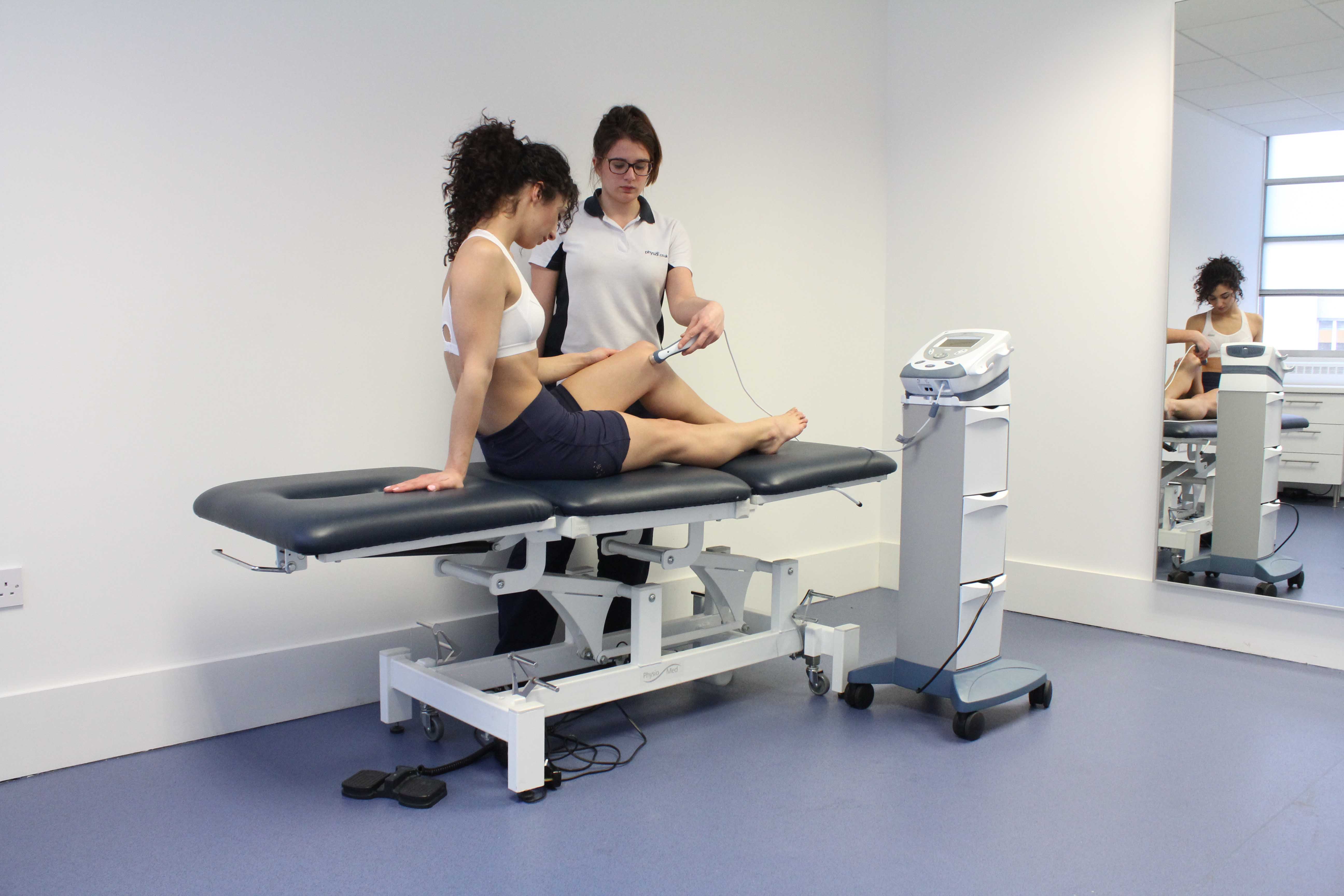If the patella has sustained some form of injury, be it a fracture or dislocation, the initial goal in physiotherapy, prior to any surgical intervention, would be to manage the initial inflammation. The early intervention of avoiding movement or loads that exacerbate the injury would be followed by ice therapy, elevation and possibly compression to help reduce swelling around the joint capsule. Depending on the exact nature of the injury, small movements of the joint can be undertaken to avoid stiffness and encourage lymphatic drainage of excess fluids.
Once stabilised and the swelling reduced, a more detailed investigation and evaluation of surgical options can be considered. The specific surgical approach used will vary depending on the cause of the patella misalignment. Repeated dislocation of the patella can stretch the ligaments holding it in place, conversely repeated trauma can cause tightening of connective tissues, pulling the patella out of alignment. Changes to the position of patella are biomechanically important as the patella acts as an additional lever arm, magnifying the power of extensor muscles.
 Above: Mobilisations of the knee joint during an assessment by a MSK therapist
Above: Mobilisations of the knee joint during an assessment by a MSK therapistSurgical procedure for Patella Alignment Surgery.
The various surgical options used for correcting patella misalignment will be adapted for each client depending on the nature of their deficiency. If the connective tissues on one side have tightened due to a poorly healed injury they can be surgically released and the patella realigned. If opposing connective tissue has become stretched, particularly by dislocation, then it reattached further around the front of the knee. If necessary, even one of the hamstring tendons can be rerouted to provide additional support to the patella.
In some cases soft tissue adjustments are insufficient to correct the biomechanical abnormality. Complete realignment of the patella, moving its main point of bone connection, the tibial tubercle, more toward the inner angle of the knee can correct some issues. This is always accompanied by soft tissue adjustments to avoid creating new irregular forces of stress on the joint.
Physiotherapy following Patella Alignment Surgery.
Physiotherapy is vitally important in the rehabilitation of the knee joint following Patella Alignment Surgery. With surgical intervention new scar tissue will form and the joint will initially be tender and unstable. Further swelling and stiffness will also result from having the procedure. Physiotherapy will manage the inflammation process and help direct the healing tissues to achieve optimal physical performance.
 Above: Patella mobilisations performed by MSK Physiotherapist
Above: Patella mobilisations performed by MSK PhysiotherapistOur experienced musculoskeletal physiotherapists will use the following treatments to ensure you make the best possible recovery;
- Soft tissue Massage, ice therapy and postural drainage to help dissipate swelling from around the knee capsule.
- Passive mobilisations of the knee joint and patella to prevent stiffness and encourage connective fibres to heal in functionally strong directions.
- Muscle strengthening exercises, particularly of the quads, will help stabilise the joint and support normal patella movement.
- Advice on activity modification to prevent reoccurrence in instability and use of potential supportive aids during intense activity.
 Above: Ultrsound eletrotherapy applied to the soft tissues of the knee by Physiotherapist
Above: Ultrsound eletrotherapy applied to the soft tissues of the knee by PhysiotherapistSummary
Patella Alignment Surgery is an effective treatment when more conservative stretch or strengthening exercises are unable to sufficiently correct misalignment. Subsequent physiotherapy treatment is an integral part of the healing process to ensure you achieve the best functional recovery.
We employ experienced musculoskeletal physiotherapists who can treat you with a range of therapeutic techniques to match your personal clinical needs. If you would like to know more about how physiotherapy can help rehabilitate you following patella alignment surgery, please contact us via email at office@physio.co.uk or phone us on 0330 088 7800.
 Above: Patella mobilisations performed by MSK Physiotherapist
Above: Patella mobilisations performed by MSK Physiotherapist
 0330 088 7800
0330 088 7800

































